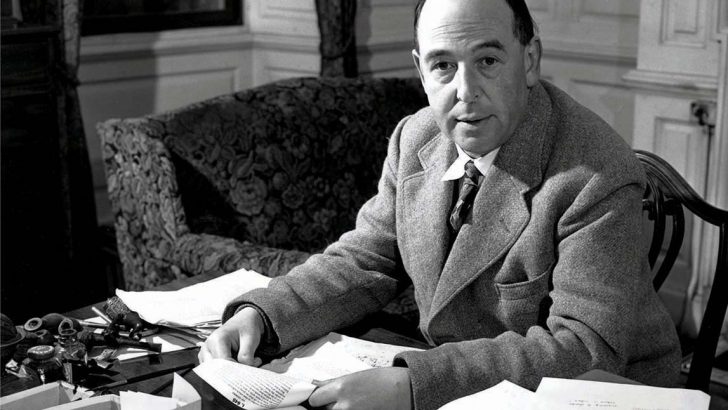Notebook
It is 1947, and dusk is falling on the town of Drogheda. In the White Horse Inn on West St, a middle-aged writer is at work, penning a short essay. His name is Clive Staples Lewis.
He had already made his name as a scholar of English literature, and as a lively proponent of Christian faith. He had already published The Problem of Pain and The Screwtape Letters, but it would be three years before he found global acclaim as the author of The Lion, the Witch, and the Wardrobe and the other Narnia books.
What’s curious about the essay he wrote that night in the White Horse Inn, though, is the fact that he wrote it for a local order of nuns, the Medical Missionaries of Mary.
Thoughts
The essay, given the unassuming title, ‘Some Thoughts’, is a brilliant explanation of Christian concern for the sick, a concern that stretches from the Medical Missionaries, to the medieval hospitals, and deeper still, to the words and actions of Our Lord himself: “When I was sick, you visited me” (Matthew 25:36).
Lewis argues that the establishment of hospitals and hospices by so many generations of Christians is evidence that Christianity is not uninterested in this present life. Although Christians are certainly focused on the promise of eternal life, this in no way leads them to ignore the injustice and suffering that blights this present age. Christianity, Lewis writes, is neither merely a “world-affirming religion” nor a “world-denying religion”: it affirms the goodness (and brokenness) of this world, while recognising that it is not our ultimate home, since it will ultimately be transformed into a new creation where evil, death, and suffering will have no dominion.
Death is one aspect of this world’s brokenness, and, Lewis argues, Christians who hope for the renewal of creation rightly fight sickness and death here and now by means of medical care. We know that death is not final, and so we can face death calmly, but we know too that death is not according to God’s original and ultimate plan, and so we fight it. This is why it makes sense for followers of Jesus, who wept at the death of his friend Lazarus, to do what the nuns at Our Lady of Lourdes Hospital were doing every day in 1947: “fighting against death earnestly, skillfully, and calmly”.
Protestant
Why, though, was Lewis, a Northern Protestant, writing an essay in support of a Catholic order of nuns? What had brought these two worlds into contact?
The answer is unexpectedly moving: C.S. Lewis was in Drogheda that night because his brother, Warnie, was a patient in Our Lady of Lourdes Hospital, being cared for by the nuns there. Warnie, a former soldier, had been battling alcoholism for many years, and the Medical Missionaries of Mary had helped him “dry out” many times before this night in 1947, and would help him do so almost annually until his death.
Suspicious
Warnie, for his part, had been suspicious of the nuns initially. He admitted that he had regarded the Roman Catholic world as “sinister and ogreish”, but in Drogheda his prejudices simply fell away: “The first thing that strikes you is the radiant happiness of these holy and very loveable women, from Mother Mary Martin, their superior, down to the youngest novice; whatever else it is, it is a life of joy and laughter”. Warnie, through his long fight against the disease of alcoholism, found in Our Lady of Lourdes Hospital a place of gentle, Christlike care, “a little fortress of happy, valiant Christianity”.
That night in the White Horse Inn, C.S. Lewis wrote a well-argued essay, using all his intellectual skills, but he did so with a grateful heart, grateful that his sick brother was safe in the “earnest, skilful, and calm” care of the Medical Missionaries of Mary.
Welcomed like Christ
Just a minute’s walk from the White Horse – now the Westcourt Hotel – is a fairly substantial ruin of a priory of the Crutched Friars, St Mary’s de Urso, known locally as the Old Abbey. The Crutched Friars aren’t all that well known today, but in medieval Ireland they ran a number of hospitals, places of care and rest for travellers, lepers, and the dying, and St Mary’s de Urso was one such establishment. These were part of a nationwide network of dozens of hospitals and hospices run by orders like the Knights Hospitaller, the Benedictines, and the Norbertines. From Kilmainham to Rindoon, from Leopardstown to Trim, from Killagha to Drumacoo, the sick and the weary were welcomed like Christ.



